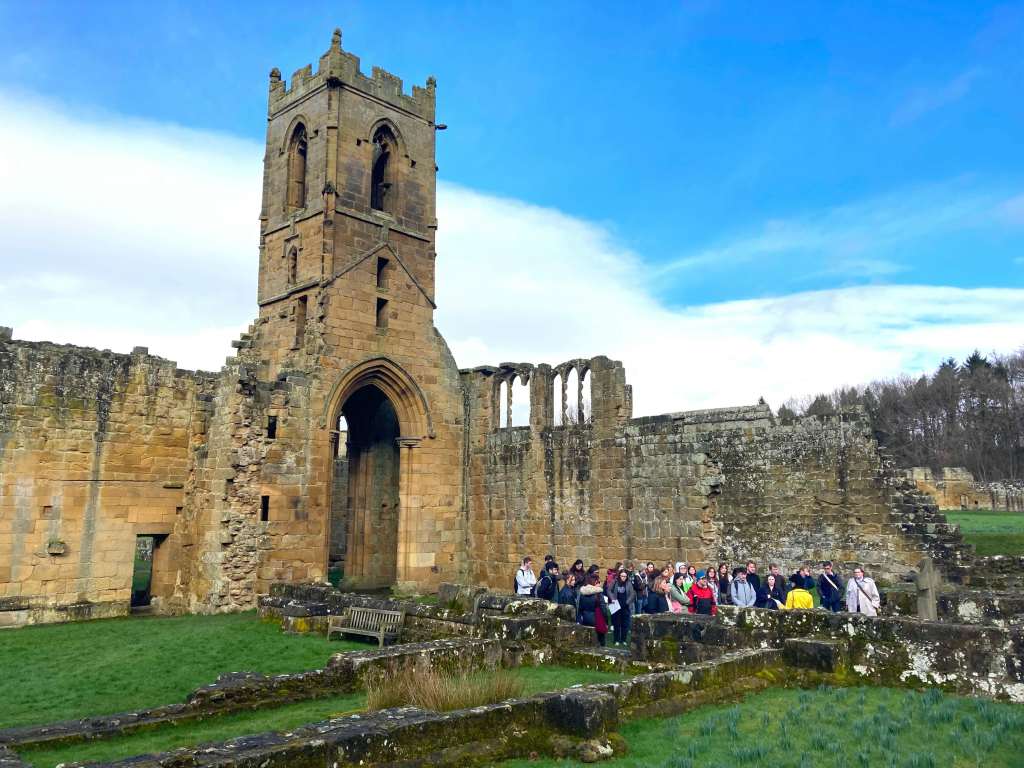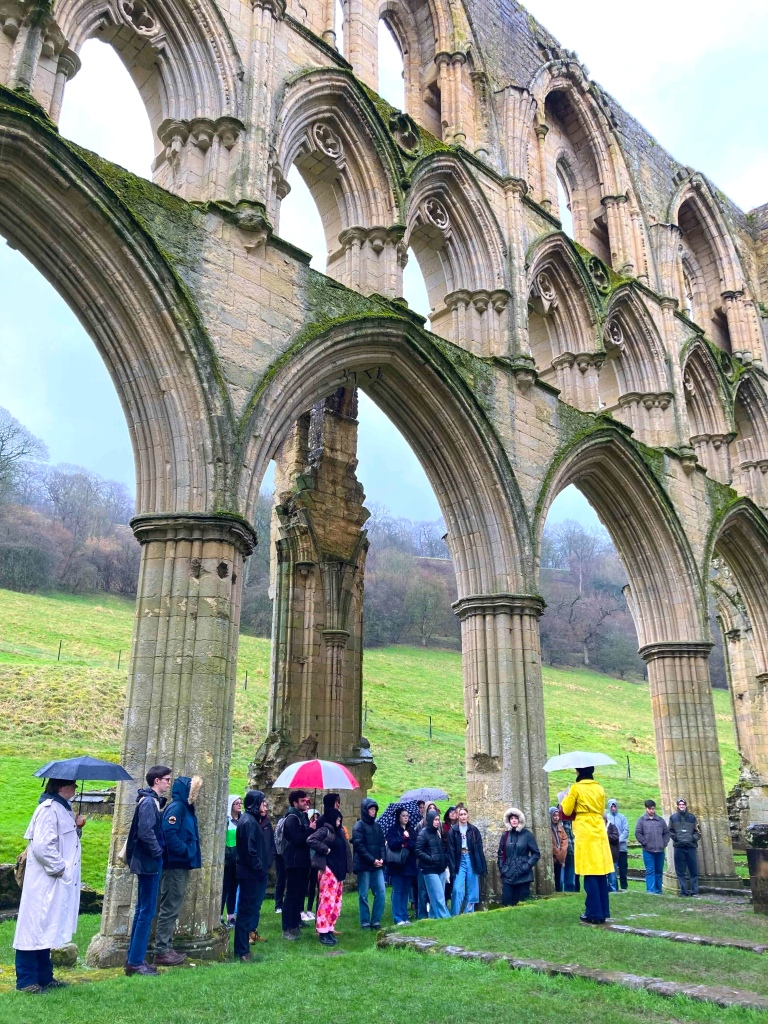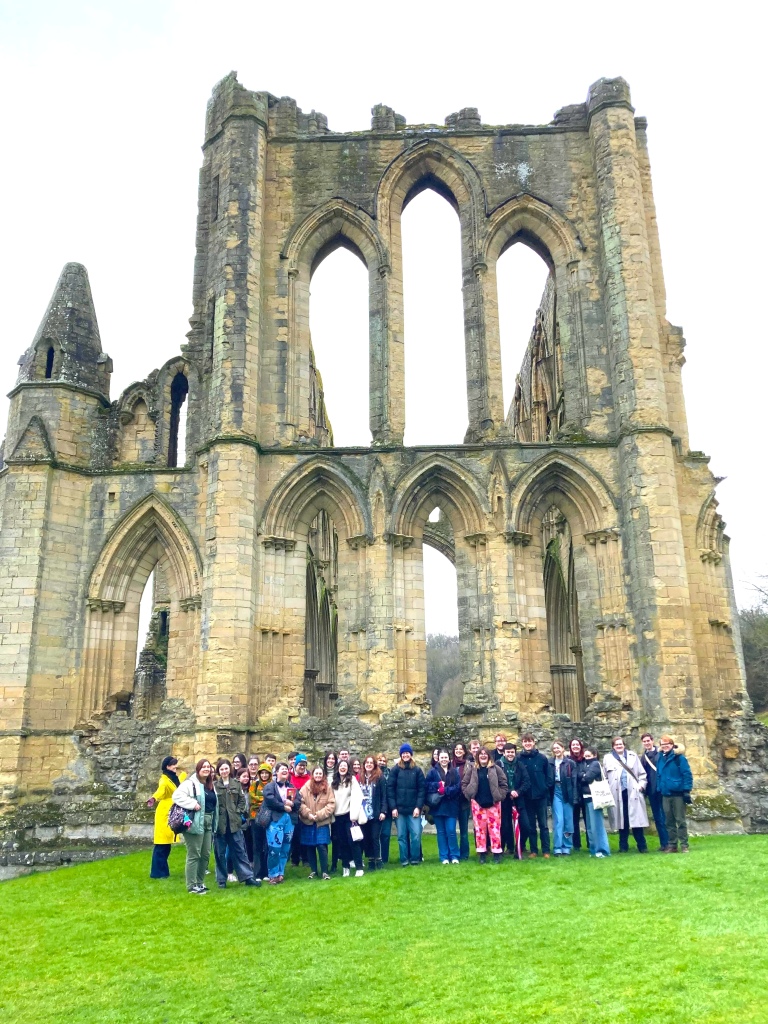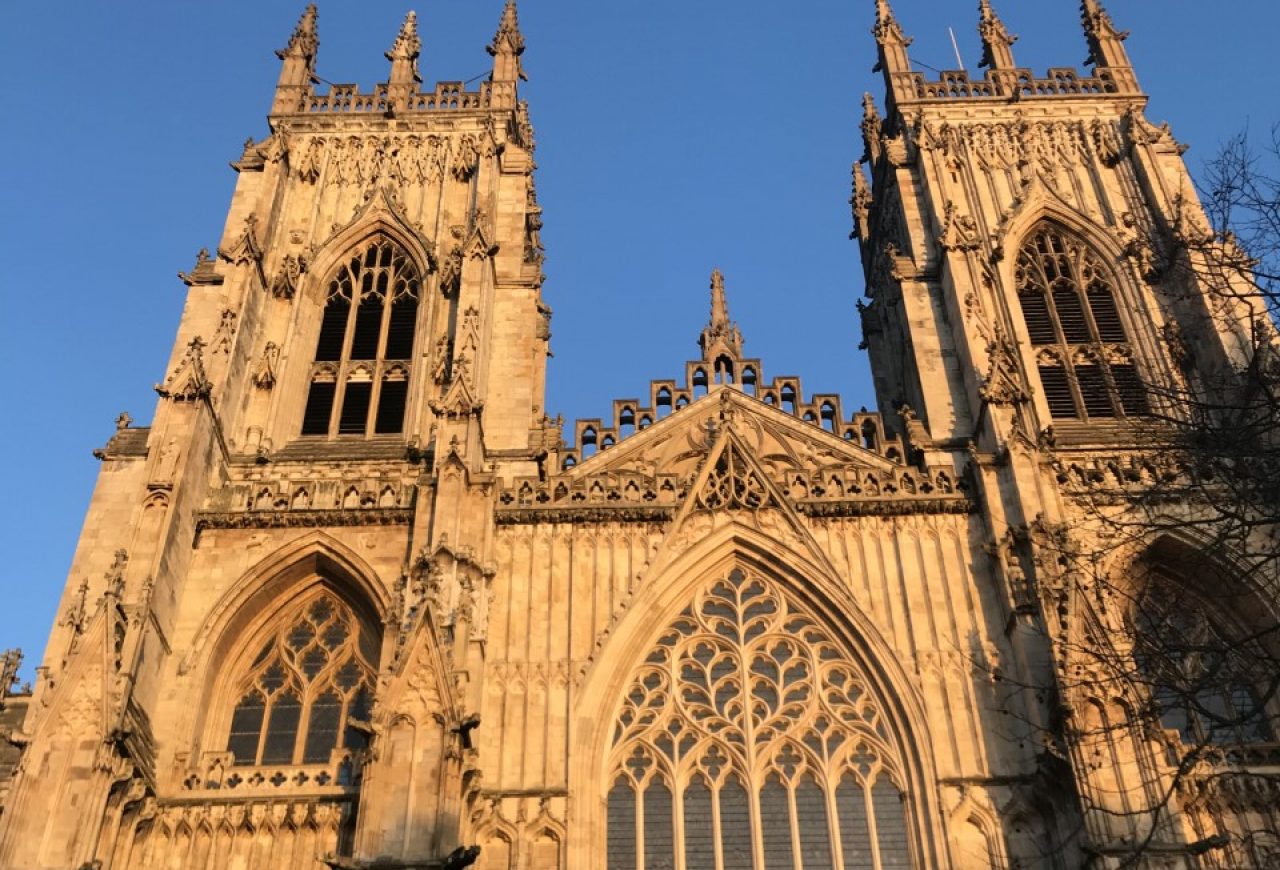Visiting historic sites allows us to experience the sounds, spaces and structures of the medieval past in a special way, inviting new ideas and questions about their significance. At Yorkshire’s monastic sites, it can emphasise connections with nature as well as highlight isolation and the distinct ways faith was demonstrated at these places, as Scarlett Walker found when visiting of Mount Grace Priory and Rievaulx Abbey for the module The Visible Past.
As soon as the coach pulled into the car park, the first thing to notice about both Mount Grace Priory and Rievaulx Abbey is the complete isolation. Both buildings are cut off from ordinary life within the stones of their monastic building. Mount Grace is built at the bottom of a valley and is completely surrounded by nature. The sound of pheasants and geese is prominent when there and, even in modern life, the hum of the motorway is a distant sound. At Mount Grace, the idea of isolation is built into the very foundations of the monastery. This is demonstrated by the reconstructed monastic cell, which shows how the monks would have lived separately from each other. These were self-reliant houses with gardens to grow food and working tools, such as a loom in the attic. There was a hole in the wall where food would be delivered to them, which was curved to keep them from seeing each other. The monastic cells were situated around the edge of the cloister. The cloister was the only area of socialisation the Carthusian monks would have had each week when they went to church in the chapel, of which the bell tower is still visible. The tower rises above the cloister, suggesting it is the focal point of the monastery and the most significant part for the monks living there, where they could demonstrate their faith.

The isolation was also similar at Rievaulx Abbey. To get there we had to go down a rather steep hill to reach the car park which was set away from the building. It is very far away from any modern-day roads and is completely buried in the walls of nature. It was surrounded by tall, steep hills of shrubbery and trees, and was also built near the river Rye, which was visible as we drove away from the abbey. This is evidence of how the monks who inhabited Rievaulx would have used nature and ingrained it into their daily lives. Although there is a sense of isolation present in the placing of Rievaulx Abbey it has a different sense to the idea of isolation than that of Mount Grace Priory. Mount Grace believed in separation from each other as well as the world outside of the religious order, whereas Rievaulx had shared dormitories where the monks lived among each other as well as communal eating space and places of worship. This was done in the magnificent church building which is still visible today and towers over the complex. The sheer height of this church demonstrates that it was at the centre of monastic life. The church and cloisters were built surrounded by fields, which created enclosures for livestock, orchards and made it easy for agriculture, demonstrating the self-reliance of the abbey. These walls are still visible at the site today and give a sense of what life for a monk would have been like. Rievaulx Abbey also has an infirmary, the location of which is still visible at the site. This would have been where they took care of the sick, older monks and it formed the earliest surviving infirmary complex in a Cistercian building in Britain. It demonstrates the monk’s need to look after each other and their own.

Another thing noticeable after visiting both abbeys was the difference in design. Mount Grace Priory has a simplistic build to it, an idea of necessity rather than aesthetics. The monastic cells were small and simple, with a room for sleeping, a room for praying, an attic upstairs for working and a small garden in the back for growing vegetables and supporting themselves. Even the belltower, which was the centrepiece of the priory, was smaller than the typical idea of a belltower, built for purpose rather than design. Rievaulx, however, was gothic and impressive and it towered over the landscape, letting everyone know it was there. Everything about Rievaulx Abbey was lavish and striking from the large windows and high ceilings, where stained glass would have allowed light to shine down onto the altar and into the most significant part of the monastery. The abbey was built over three floors and shows its imposing nature, a dominating presence over the surrounding countryside. Although a lot of the walls are ruins, the height and the nature of the walls are still visible at the site, and it is clear that the building was seen as significant in this period.


